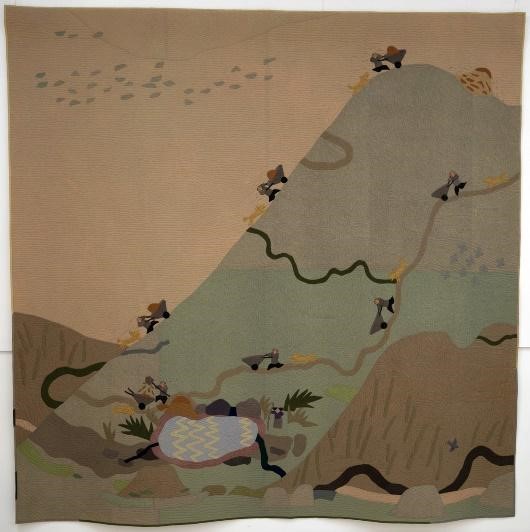
The Story Quilts of Rumi O’Brien
Oct 2, 2019 - March 15, 2020

Artist Rumi O’Brien’s quilts are intimate narratives of her life. Whether set in her everyday world of Madison, Wisconsin or in an imaginary landscape, the quilts are always deeply personal.
Rumi O’Brien grew up in Tokyo, Japan, the daughter of seminal manga (comic book) artist Katsuji Matsumoto. Later, she moved to the United States to train as a watercolorist. For the past 50 years she has lived in Madison, where, several decades ago, she also began making quilts.
O’Brien’s quilts defy categorization or pigeon-holing. They reflect her cross-cultural background, sometimes displaying America’s block-style quilt format and sometimes using Japan’s episodic narrative structure—telling a story with a series of short, visual snippets. Each figure—often a stand-in for O’Brien herself—seems to beckon us to join in a commonplace or fantastical adventure: hunting for wild mushrooms or escaping from gargantuan fishes, floating in canoes or dancing on mountains of strawberry gelatin. She shares with us her world—real and imagined, observed and felt.
